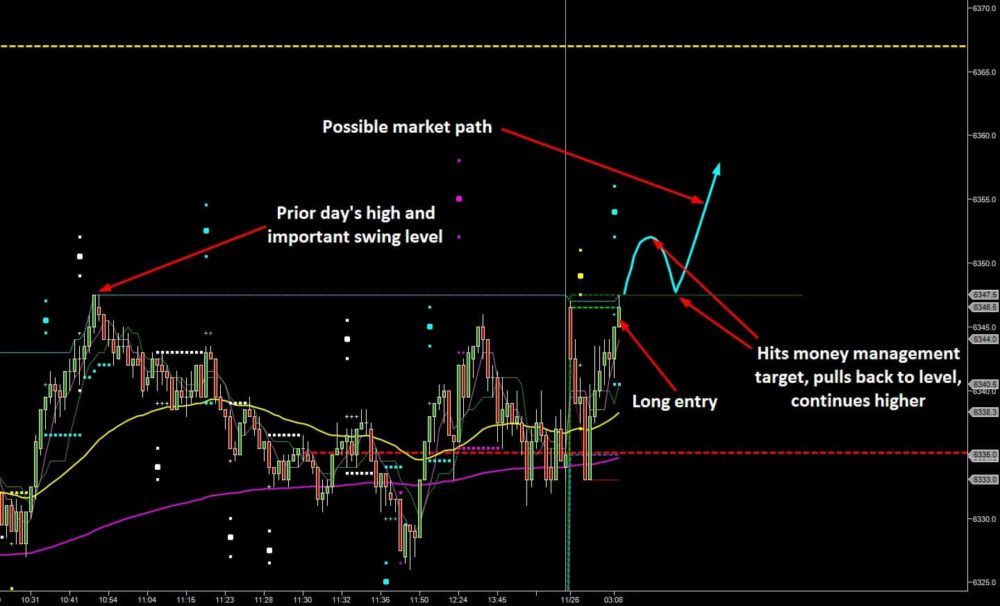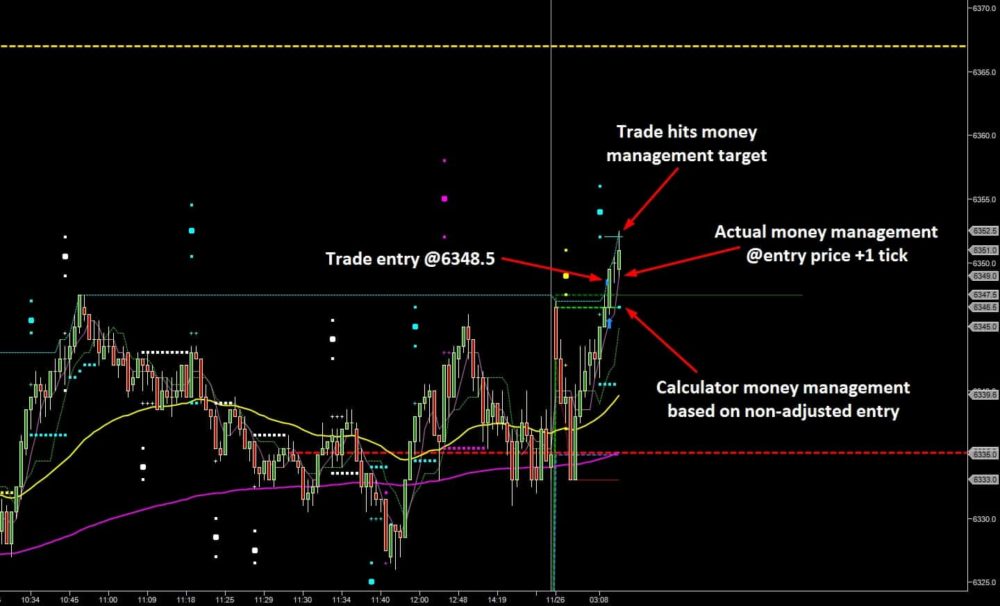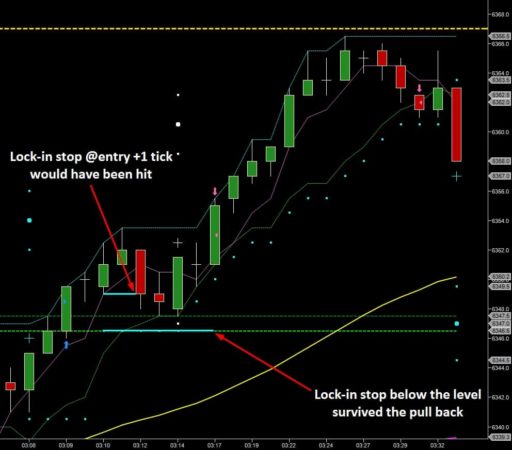- November 28, 2015
- Posted by: Shane Daly
- Categories: Trading Article, Trading Tutorials

Our trading systems clearly define your entries, targets and stops for each trade. However, there are always a few tricks that you can use to get the best out of your tools.
One excellent way to increase the efficiency of your system is by adjusting around market structure.
Market Structure
Markets won’t respect where your orders and positions are – they only care about their own structure. This can mean important swing levels, the prior day’s extremes and close, the opening price, retracement levels and whatever else you might use to form your ideas of important market reference price levels.
The difficulty can be just how far to adjust on any given trade – this really has to depend on the size of the trade and the potential it has. If the context is right, it might be worth taking a higher level of risk relative to the fixed target, due to the higher possibility of catching a nice runner. Otherwise, taking a trade that needs big adjustments to get around price levels might be something to avoid.
Not Just Entries
The adjustments that you need to make are not just about entries. If you are going to be adjusting around price levels, it’s just as important to recognize them in your targets, stops and trailing stops. This is why if you are adjusting properly, a trade that initially seems reasonable might end up being unfavorably skewed.
If you have a trade with a 16 tick target and an 11 tick stop for example, if you need to push your entry 3 ticks higher, your target 2 ticks lower and your stop 2 ticks lower, all of a sudden that 16:11 ratio reduces to 11:13.
So it’s important to think carefully about where levels are before you take the trade and evaluate the trade’s potential given how things might end up being skewed against you.
A Thanksgiving Gift
It’s my view that on any holiday session day, there can be a decent move in markets that are open in other countries. Sometimes it’s absolutely dead, but often you get at least one decent trade.
This Thanksgiving, there was a nice trade in the FTSE futures. This particular trade also serves to illustrate a clear situation of where an entry and money management lock-in stop should be adjusted around market structure.
It’s my view that any time you adjust a trade entry around a key price level, you should also adjust your lock-in stop to the opposite side of the key price level.
The reason for this is that if the level is important and it breaks, it’ll often come back and retest it from the opposite side (i.e. support becomes resistance and vice versa). If your lock-in stop is ahead of the price level in this type of scenario, there’s a strong chance of it getting hit before the market continues in the same direction towards your target.
In the event, there were good entries in both Trend Jumper and Counter Punch. Let’s look at the one in Trend Jumper.

First of all, you can see that the entry needs to be adjusted beyond the prior day’s high. So calculator entry of 6346.0 is better to be moved manually to 6348.5 – 2 ticks higher than the key price level.
It’s always important to adjust beyond a key level by more than a single tick – a market can often push through a level by a single tick and reverse quite a bit. This is because failure to find additional buying beyond the level (in this example) is a sign of weakness. The single tick fail can be stretched to a couple or even a few ticks if you are looking at faster paced markets.
The reason why the entry needs to be beyond the level is that frequently a market will bounce off a level on the first test. So even if the direction is right, you could be stopped out before it gets to your targets.

Once the trade hits money management, the calculator moves the stop to lock in 1 tick from entry. Because the entry was adjusted, the normal procedure is to manually adjust to 1 tick beyond the adjusted entry. However, it’s wise to move the stop to below the level that the entry has been adjusted around.
True, this doesn’t make the trade safe (safe in theory only), but trading risk is not only based on the number of ticks you stand to lose, but also the probability of your stop being hit.

So a better place for the money management lock-in stop is to adjust around is the same level (6347.5) that the entry was adjusted around. Better still, in this particular example the open was only slightly lower and because this could be a place where the market pushes to on the retest, this would be a good price to adjust beyond.

Because of some simple trade management techniques, the outcome of the trade was that the retest of the prior session’s high from above did not reach the money management stop and the trade achieved its target with a nice runner too. In this particular case, had the trade stopped out, there was another and that one would have been a full winner.
This won’t always be the case though and it’s better to effectively manage the trade that you have on than to rely on the possibility of a new one being generated.
Looking to market structure to manage your trades first before seeing whether it fits in with your own account risk parameters is often a very effective approach to trade selection and trade management.

Trade management seems like a very difficult thing to do well. I liked that you pointed out that it would be smart to look for a market structure to help you manage your trades.